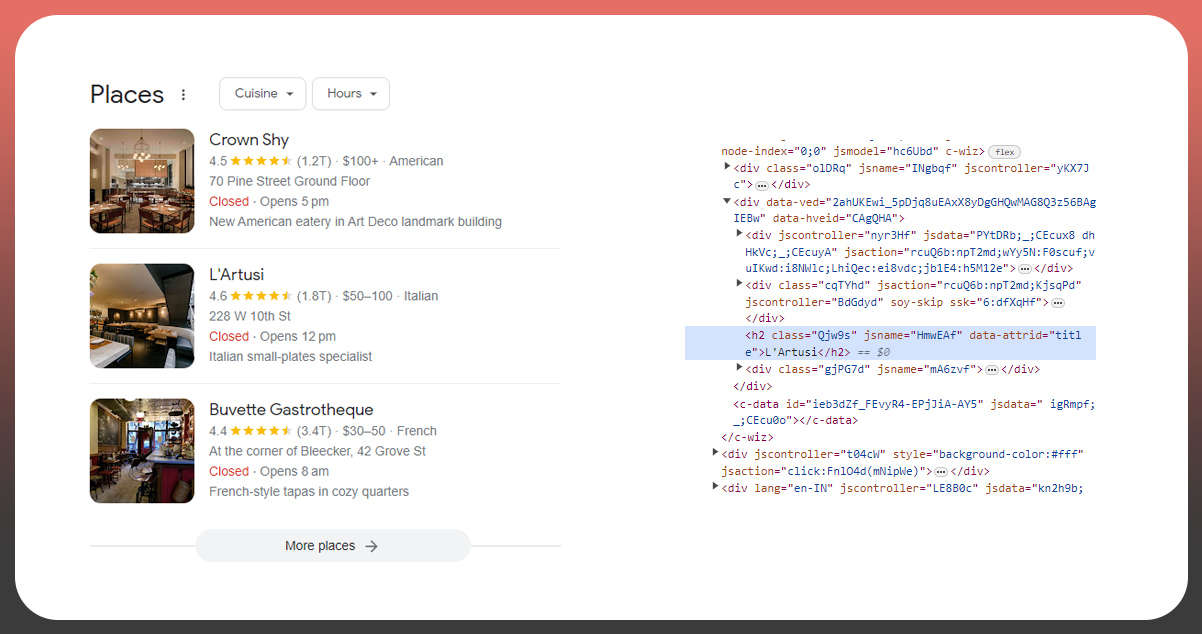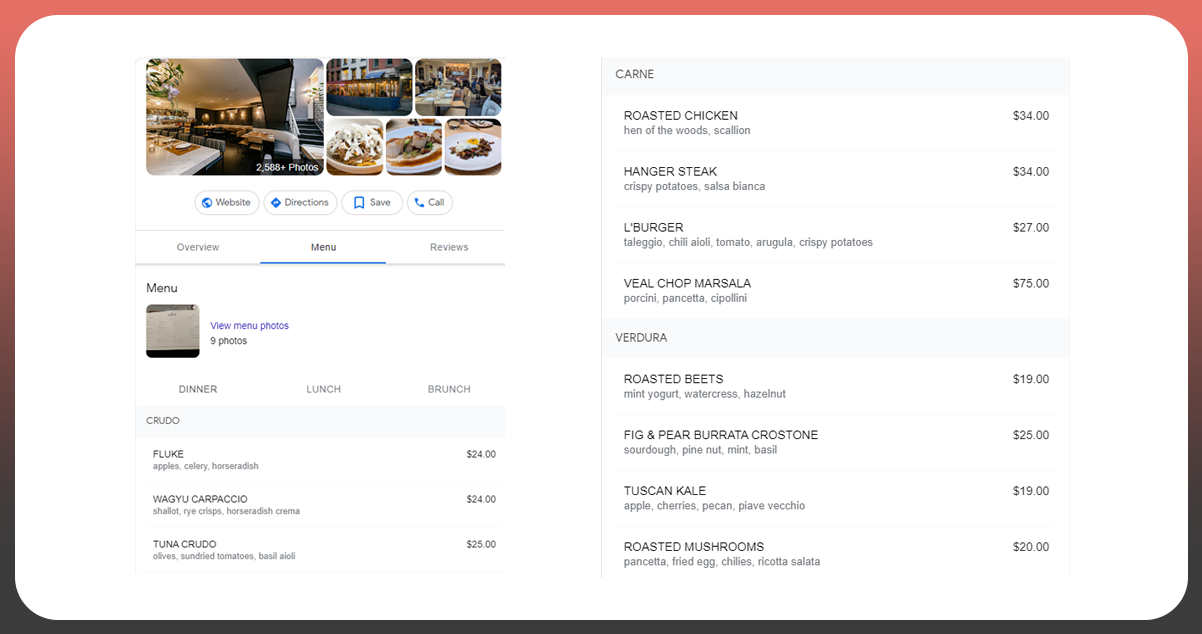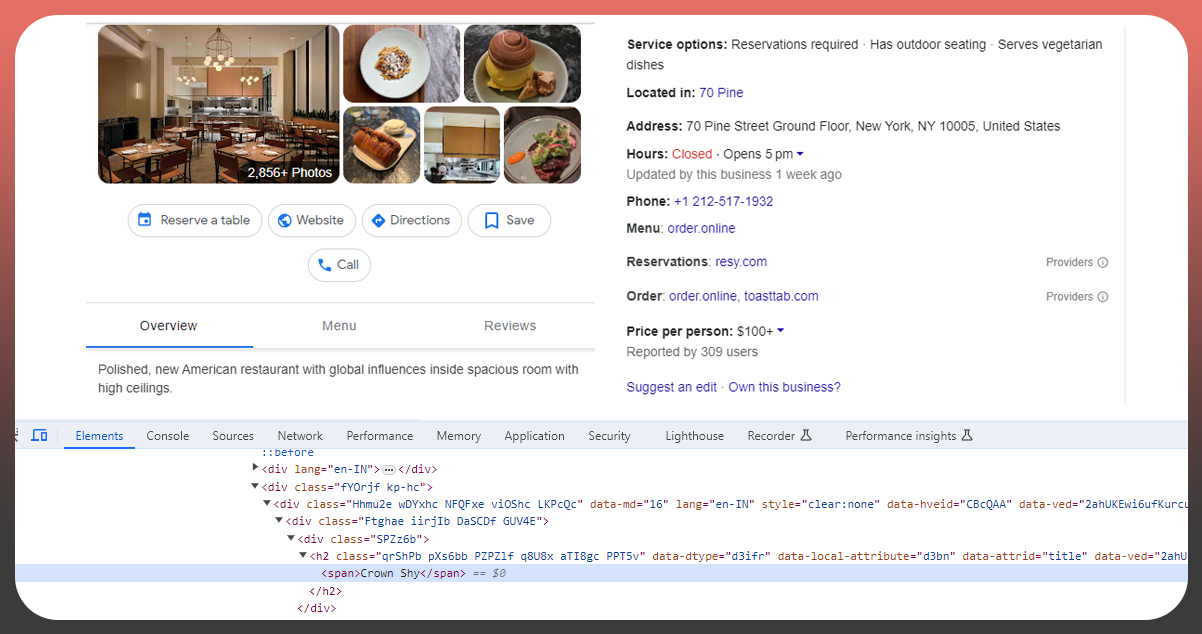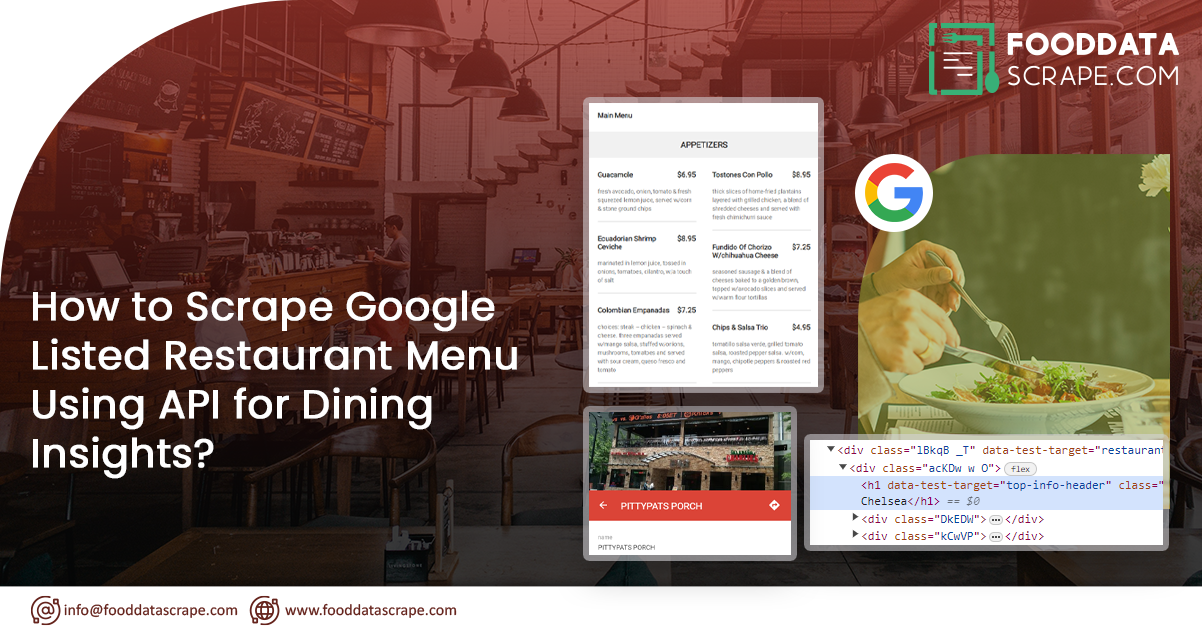In today's digital age, information is power, and nowhere is this more evident than dining out. Whether planning a romantic dinner date or satisfying a craving, consumers increasingly turn to the internet to peruse menus and discover new culinary delights. With its extensive restaurant listings repository, Google has become a go-to resource for hungry patrons seeking information about nearby eateries. However, while Google provides valuable insights into restaurant locations, reviews, and contact information, it must often display comprehensive menu details. It is where the practice of Google-listed restaurant menu scraping API comes into play, offering a solution for those craving a deeper dive into the culinary offerings of their favorite establishments.
Scrape Google's restaurant menu using API to access comprehensive dining details efficiently, empowering users to make informed choices conveniently and discover new culinary delights.
Understanding API Scraping

API scraping, or Application Programming Interface scraping, is a technique that extracts data from websites or online platforms by accessing their underlying programming interfaces. APIs serve as intermediaries that allow different software applications to communicate with each other, exchanging data and facilitating seamless interactions. By leveraging restaurant data scraping services, developers can programmatically retrieve specific information from websites, bypassing manual data entry or navigation.
The Appeal of Google Listed Restaurant Menus:
Google has established itself as a one-stop destination for consumers seeking information about local businesses, including restaurants. With its expansive listings database, Google provides users essential details such as business hours, contact information, and customer reviews. However, while Google often displays essential menu items for select restaurants, the level of detail varies, and comprehensive menu information may be lacking. It is where API scraping can fill the gap, enabling users to access a more comprehensive view of restaurant menus directly from Google's platform.
Significance of Scraping Google Listed Restaurant Menu Using API

In today's digital dining landscape, accessing comprehensive menu details from Google-listed restaurants is crucial for informed choices. API scraping emerges as a powerful tool, offering quick, convenient access to detailed culinary offerings, empowering consumers, and driving innovation in the restaurant industry.
Enhanced Information Access: API scraping allows users to access detailed menu information from Google-listed restaurants that may not be readily available through conventional search methods.
Improved Decision Making: Providing comprehensive menu details, API scraping empowers consumers to make more informed dining choices based on their preferences and dietary restrictions.
Convenience: Instead of manually browsing through multiple restaurant websites or relying on limited information from review platforms, API scraping streamlines the process by consolidating menu data into a single source.
Time-saving: Users can quickly compare menu offerings across various restaurants without extensive research, saving time and effort in decision-making.
Customization: API scraping can extract specific menu categories, such as vegetarian options or gluten-free dishes, catering to individual preferences and dietary needs.
Facilitates Innovation: Access to comprehensive menu data via API scraping can inspire the development of innovative dining-related applications and services, driving advancements in the restaurant industry.
Market Analysis: Aggregated menu data obtained through API scraping can be utilized for market analysis, helping businesses identify trends, assess consumer preferences, and optimize their offerings.
Competitive Advantage: Businesses can leverage menu data obtained through API scraping to gain insights into competitors' offerings, pricing strategies, and menu trends, informing their own strategic decisions and positioning in the market.
Challenges and Considerations while Scraping API

While API scraping offers a powerful means of accessing data, it has challenges and ethical considerations. Many websites implement measures to prevent automated scraping, such as rate limiting or CAPTCHA challenges, to protect their data and maintain server stability. Additionally, scraping data from websites without permission may raise legal and ethical concerns, mainly if it violates its terms of service or infringes upon intellectual property rights. As such, developers must exercise caution and adhere to best practices when engaging in API scraping activities.
Implementing API Scraping for Google-Listed Restaurant Menus:
To scrape restaurant menu data from Google listings, developers can utilize Google's Places API, which provides access to a wealth of business information, including their menus. Developers can extract menu details such as item names, descriptions, prices, and categories by sending HTTP requests to the Places API and parsing the JSON responses. However, it's essential to note that accessing certain features of the Places API, including menu data, may require an API key and compliance with usage limits and pricing plans. Below are the steps to scrape Google-listed restaurant menus using API.
Research and Access:
- Understand Google's API policies, terms of service, and usage limits related to scraping restaurant data.
- If you haven't already, sign up for a developer account on the Google Developers Console.
- Obtain an API key for accessing Google's restaurant data API.
Identify Target Restaurants:
- Determine the specific restaurants or types of restaurants you want to scrape menus from.
- Consider location, cuisine type, popularity, etc., to narrow your selection.
API Endpoint:
- Explore Google's API's endpoints for accessing restaurant data, including menus.
- Choose the endpoint that best fits your requirements for retrieving menu information.
Authentication:
- Authenticate your requests to the API using your API key. It may involve including the API key in the request headers or parameters.
- Follow any additional authentication procedures specified by Google's API documentation.
Request and Receive Data:
- Make HTTP requests to the chosen API endpoint, specifying parameters such as location or restaurant ID to retrieve menu data.
- Handle the API responses, which typically come in JSON format, and extract relevant menu information from the returned data.
Parse and Store Data:
- Parse the menu data from the API responses to extract individual menu items, descriptions, prices, and other relevant details.
- Organize the extracted menu data into a structured format suitable for storage and further analysis.
- Store the parsed menu data in a database, CSV file, or other preferred storage solution for easy access and retrieval.
Testing and Compliance:
- Test your scraping script thoroughly to ensure it retrieves menu data accurately and efficiently.
- Monitor and handle errors or exceptions during the scraping process, such as network errors or API rate limits.
- Ensure compliance with Google's API usage terms and legal requirements related to web scraping and data usage throughout the scraping process.
Ethical Considerations and Best Practices:
When engaging in API scraping for restaurant menus or any other purpose, developers must prioritize ethical considerations and adhere to best practices. It includes obtaining explicit permission from website owners or adhering to their terms of service, respecting rate limits and usage guidelines, and ensuring that scraping activities do not disrupt the regular operation of the website or its services. Additionally, developers should be transparent about their scraping activities and obtain user consent when applicable, mainly if personal data is involved.
Conclusion: In the quest for culinary exploration, access to comprehensive restaurant menu information can make all the difference. While Google's listings offer valuable insights into local eateries, scraping restaurant data unlocks a deeper understanding of their culinary offerings. By leveraging APIs and adhering to ethical principles, developers can empower consumers with the information they need to make informed dining decisions, transforming how we explore and experience the world of food.
Unlock powerful insights for your business with Food Data Scrape, your trusted ally in comprehensive Food Data Aggregator and Mobile Restaurant App Scraping. Our specialized services provide deep data analytics and insights, empowering informed decision-making for your success in a competitive market. Connect with us today to leverage aggregated data and propel your business forward with data-driven intelligence. Reach out to transform your strategies and stand out in the bustling marketplace.






























































































